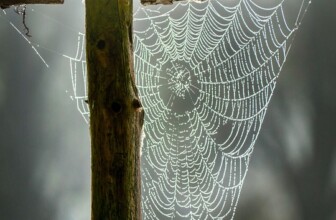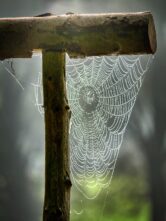Top 10 Art Galleries Redefining the Global Art Scene
Art has always served as a mirror reflecting the socio-political, cultural, and technological transformations of society. In the modern era, art galleries play a critical role in shaping these transformations, creating platforms that push the boundaries of artistic expression and engagement. In this article, we will explore ten art galleries—primarily located in the U.K.—that are redefining the global art scene through innovative exhibitions, community engagement, and the promotion of underrepresented artists.
1. Tate Modern, London
Overview
One of the world's most famous contemporary art galleries, Tate Modern has become a cultural icon since its opening in 2000. Housed in a former power station on the banks of the River Thames, the gallery showcases international modern and contemporary artworks, ranging from the late 19th century to the present.
Contributions to the Art Scene
Tate Modern not only hosts major exhibitions but also participates in international dialogue through its collection, which features works by iconic artists like Picasso, Warhol, and Hockney. The gallery's dedication to contemporary discourse has led to innovative programming, such as participatory art projects and community engagement initiatives.
Website
For more information, visit Tate Modern.
2. White Cube, London
Overview
Founded by Jay Jopling in 1993, White Cube has established itself as a leading contemporary art gallery in London. Renowned for its minimalist, gallery-like spaces, White Cube showcases both established and emerging artists.
Contributions to the Art Scene
White Cube plays a pivotal role in promoting groundbreaking art practices. The gallery has a reputation for organizing innovative exhibitions that push the boundaries of media and content. Artists such as Damien Hirst and Tracey Emin have brought global attention to the gallery, making it an essential stop for art enthusiasts.
Website
For more information, visit White Cube.
3. Serpentine Galleries, London
Overview
Comprising two venues—Serpentine Gallery and Serpentine Sackler Gallery—this institution is renowned for its summer pavilion, designed annually by a different architect. Since its founding in 1970, Serpentine has promoted contemporary art and provided a platform for both established and emerging artists.
Contributions to the Art Scene
Serpentine Galleries have consistently engaged artists to create site-specific works, fostering dialogue between architecture and art. The gallery has also focused on socially and politically engaged art, thus offering valuable reflections on current issues.
Website
For more information, visit Serpentine Galleries.
4. The Hepworth Wakefield, West Yorkshire
Overview
Opened in 2011, The Hepworth Wakefield has rapidly become one of the U.K.'s most influential art venues. Designed by David Chipperfield, the gallery is dedicated to modern and contemporary art and was named after the sculptor Barbara Hepworth.
Contributions to the Art Scene
The Hepworth Wakefield emphasizes regional engagement while also hosting nationally and internationally significant exhibitions. The gallery has a strong program that focuses on underrepresented artists and often collaborates with local communities to develop participative art experiences.
Website
For more information, visit The Hepworth Wakefield.
5. Frieze London
Overview
Frieze London is an international art fair that takes place annually in Regent's Park. While technically not a gallery, Frieze brings together leading galleries from around the world, showcasing the most innovative contemporary art.
Contributions to the Art Scene
Frieze has redefined how art fairs function by incorporating artist talks, screenings, and side events, sparking dialogue and creating opportunities for engagement beyond traditional buying and selling. It also features a dedicated section for emerging galleries, ensuring that new voices are heard within the art market.
Website
For more information, visit Frieze.
6. ICA (Institute of Contemporary Arts), London
Overview
Founded in 1946, the ICA has been a pioneering force in contemporary art in the U.K. Known for its multidisciplinary approach, the ICA encompasses visual arts, film, music, and performance.
Contributions to the Art Scene
The ICA is committed to innovation and dialogue, often commissioning new works. By offering a diverse program that includes exhibitions, talks, and screenings, the ICA interrogates contemporary issues and encourages public participation in the arts.
Website
For more information, visit Institute of Contemporary Arts.
7. The Barbican Centre, London
Overview
The Barbican Centre is one of the largest multi-arts centers in Europe, offering a rich variety of art forms, including visual arts, theatre, music, and cinema.
Contributions to the Art Scene
The Barbican often collaborates with other cultural institutions, creating platforms for thematic explorations that transcend conventional genres. Its galleries regularly feature innovative exhibitions by both established and emerging artists, making it a vibrant hub of artistic activity.
Website
For more information, visit The Barbican Centre.
8. Nottingham Contemporary, Nottingham
Overview
As one of the largest contemporary art spaces in the U.K., Nottingham Contemporary opened in 2009 and quickly developed a reputation for presenting ambitious exhibitions that address contemporary issues.
Contributions to the Art Scene
Nottingham Contemporary focuses on thematic exhibitions that explore issues of historical and social importance. By hosting work from both local and international artists, the gallery plays a crucial role in expanding the narrative of contemporary art in the U.K.
Website
For more information, visit Nottingham Contemporary.
9. Baltic Centre for Contemporary Art, Gateshead
Overview
Located in a former flour mill on the banks of the River Tyne, Baltic Centre for Contemporary Art has quickly become a leading venue for contemporary art since it opened in 2002.
Contributions to the Art Scene
Baltic engages with both international and local artists, providing a platform for experimentation and new ideas in art. The gallery is committed to community engagement and frequently hosts talks, screenings, and workshops, encouraging a dynamic relationship between artists and the public.
Website
For more information, visit Baltic Centre for Contemporary Art.
10. The Foundling Museum, London
Overview
The Foundling Museum tells the story of the Foundling Hospital, London’s first home for abandoned children, and holds a unique collection of art and artifacts.
Contributions to the Art Scene
Through its collection and exhibitions, the Foundling Museum explores themes of childhood, care, and social responsibility. It often collaborates with contemporary artists to produce new works that respond to its historic themes, making it a vital part of the social art landscape in the U.K.
Website
For more information, visit The Foundling Museum.
Conclusion
From Tate Modern's iconic space to the innovative programming at smaller venues like Nottingham Contemporary and The Hepworth Wakefield, these ten galleries represent a dynamic landscape of contemporary art in the U.K. Their dedication to pushing boundaries—whether through community engagement, representation of underrepresented artists, or thematic exploration—highlights the vital role that art galleries play in shaping cultural dialogues.
These institutions not only exhibit art but also challenge notions of what art can be, fostering a vibrant connection between artists and the public, ensuring that the art scene remains a dynamic and evolving part of our global culture. Whether you're a seasoned art enthusiast or a newcomer, these galleries offer countless opportunities to engage with the world of contemporary art.










